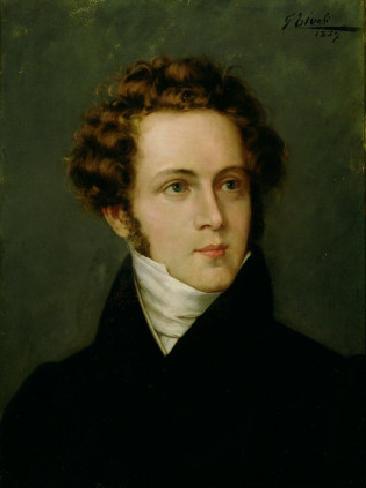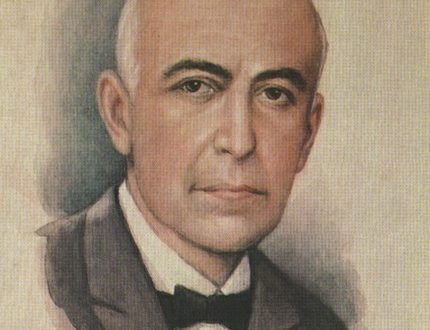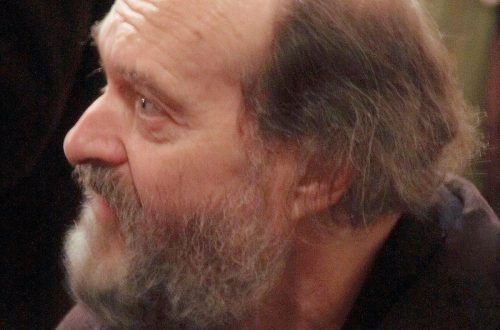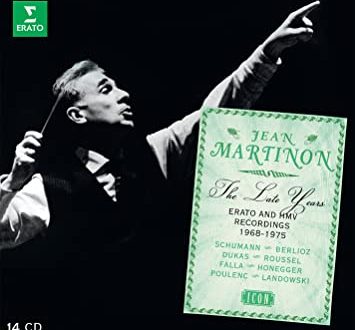
Vincenzo Bellini (Vincenzo Bellini) |
Contents
Vincenzo Bellini
… He is rich in a sense of sadness, an individual feeling, inherent in him alone! J. Verdi
The Italian composer V. Bellini entered the history of musical culture as an outstanding master of bel canto, which means beautiful singing in Italian. On the back of one of the gold medals issued during the composer’s lifetime in his honor, a brief inscription read: “Creator of Italian melodies.” Even the genius of G. Rossini could not overshadow his fame. The extraordinary melodic gift that Bellini possessed allowed him to create original intonations full of secret lyricism, capable of influencing the widest range of listeners. Bellini’s music, despite the lack of all-round skill in it, was loved by P. Tchaikovsky and M. Glinka, F. Chopin and F. Liszt created a number of works on themes from the Italian composer’s operas. Such outstanding singers of the 1825th century as P. Viardot, the Grisi sisters, M. Malibran, J. Pasta, J. Rubini A. Tamburini and others shone in his works. Bellini was born into a family of musicians. He received his musical education at the Neapolitan Conservatory of San Sebastiano. A student of the then famous composer N. Tsingarelli, Bellini very soon began to look for his own path in art. And his short, only ten years (35-XNUMX) composing activity became a special page in the Italian opera.
Unlike other Italian composers, Bellini was completely indifferent to opera buffa, this favorite national genre. Already in the first work – the opera “Adelson and Salvini” (1825), with which he made his debut at the Conservatory Theater of Naples, the composer’s lyrical talent was clearly manifested. Bellini’s name gained wide popularity after the production of the opera “Bianca and Fernando” by the Neapolitan theater San Carlo (1826). Then, with great success, the premieres of the operas The Pirate (1827) and Outlander (1829) are held at the La Scala Theater in Milan. The performance of Capuleti and Montecchi (1830), first staged on the stage of the Venetian Fenice Theater, greets the audience with enthusiasm. In these works, patriotic ideas found an ardent and sincere expression, consonant with the new wave of the national liberation movement that began in Italy in the 30s. last century. Therefore, many premieres of Bellini’s operas were accompanied by patriotic manifestations, and melodies from his works were sung on the streets of Italian cities not only by theater goers, but also by artisans, workers, and children.
The fame of the composer was further strengthened after the creation of the operas La sonnambula (1831) and Norma (1831), it goes beyond Italy. In 1833 the composer traveled to London, where he successfully conducted his operas. The impression made by his works on I. V. Goethe, F. Chopin, N. Stankevich, T. Granovsky, T. Shevchenko testifies to their significant place in European art of the XNUMXth century.
Shortly before his death, Bellini moved to Paris (1834). There, for the Italian Opera House, he created his last work – the opera I Puritani (1835), the premiere of which was given a brilliant review by Rossini.
In terms of the number of created operas, Bellini is inferior to Rossini and G. Donizetti – the composer wrote 11 musical stage works. He did not work as easily and quickly as his illustrious compatriots. This was largely due to Bellini’s method of work, which he talks about in one of his letters. Reading the libretto, penetrating the psychology of the characters, acting as a character, searching for verbal and then musical expression of feelings – such is the path outlined by the composer.
In creating a romantic musical drama, the poet F. Romani, who became his permanent librettist, turned out to be Bellini’s true like-minded person. In collaboration with him, the composer achieved the naturalness of the embodiment of speech intonations. Bellini knew perfectly the specifics of the human voice. The vocal parts of his operas are extremely natural and easy to sing. They are filled with breadth of breath, continuity of melodic development. There are no unnecessary decorations in them, because the composer saw the meaning of vocal music not in virtuoso effects, but in the transmission of living human emotions. Considering the creation of beautiful melodies and expressive recitative as his main task, Bellini did not attach much importance to orchestral color and symphonic development. However, despite this, the composer managed to raise the Italian lyric-dramatic opera to a new artistic level, in many respects anticipating the achievements of G. Verdi and the Italian verists. In the foyer of Milan’s La Scala theater there is a marble figure of Bellini, in his homeland, in Catania, the opera house bears the name of the composer. But the main monument to himself was created by the composer himself – they were his wonderful operas, which to this day do not leave the stages of many musical theaters of the world.
I. Vetlitsyna
- Italian opera after Rossini: the work of Bellini and Donizetti →
The son of Rosario Bellini, the head of the chapel and music teacher in the aristocratic families of the city, Vincenzo graduated from the Naples Conservatory “San Sebastiano”, becoming its scholarship holder (his teachers were Furno, Tritto, Tsingarelli). At the conservatory, he meets Mercadante (his future great friend) and Florimo (his future biographer). In 1825, at the end of the course, he presented the opera Adelson and Salvini. Rossini liked the opera, which did not leave the stage for a year. In 1827, Bellini’s opera The Pirate was a success at the La Scala theater in Milan. In 1828, in Genoa, the composer met Giuditta Cantu from Turin: their relationship would last until 1833. The famous composer is surrounded by a large number of fans, including Giuditta Grisi and Giuditta Pasta, his great performers. In London, “Sleepwalker” and “Norma” with the participation of Malibran were again successfully staged. In Paris, the composer is supported by Rossini, who gives him a lot of advice during the composition of the opera I Puritani, which was received with unusual enthusiasm in 1835.
From the very beginning, Bellini was able to feel what constitutes his special originality: the student experience of “Adelson and Salvini” gave not only the joy of the first success, but also the opportunity to use many pages of the opera in subsequent musical dramas (“Bianca and Fernando”, “Pirate”, Outlander, Capulets and Montagues). In the opera Bianca e Fernando (the hero’s name was changed to Gerdando so as not to offend the Bourbon king), the style, still under the influence of Rossini, was already able to provide a diverse combination of word and music, their gentle, pure and unconstrained harmony, which marked and good speeches. The wide breathing of the arias, the constructive basis of many scenes of the same type of structure (for example, the finale of the first act), intensifying the melodic tension as the voices entered, testified to genuine inspiration, already powerful and able to animate the musical fabric.
In “Pirate” the musical language gets deeper. Written on the basis of the romantic tragedy of Maturin, a well-known representative of the “horror literature”, the opera was staged with triumph and strengthened Bellini’s reformist tendencies, which manifested itself in the rejection of dry recitative with an aria that was completely or largely freed from the usual ornamentation and branched in various ways, depicting the madness of the heroine Imogen, so that even the vocalizations were subject to the requirements of the image of suffering. Along with the soprano part, which begins a series of famous “crazy arias”, another important achievement of this opera should be noted: the birth of a tenor hero (Giovanni Battista Rubini acted in his role), honest, beautiful, unhappy, courageous and mysterious. According to Francesco Pastura, a passionate admirer and researcher of the composer’s work, “Bellini set about composing opera music with the zeal of a man who knows that his future depends on his work. There is no doubt that from that time on he began to act according to the system, which he later told his friend from Palermo, Agostino Gallo. The composer memorized the verses and, locking himself in his room, recited them loudly, “trying to transform into the character who pronounces these words.” As he recited, Bellini listened attentively to himself; various changes in intonation gradually turned into musical notes … ”After the convincing success of The Pirate, enriched by experience and strong not only in his skill, but also in the skill of the librettist – Romani, who contributed to the libretto, Bellini presented in Genoa a remake of Bianchi and Fernando and signed a new contract with La Scala; before getting acquainted with the new libretto, he wrote down some motifs in the hope of developing them “spectacularly” in the opera. This time the choice fell on Prevost d’Harlincourt’s Outlander, adapted by J.C. Cosenza into a drama that was staged in 1827.
Bellini’s opera, staged on the stage of the famous Milan theater, was received with enthusiasm, seemed superior to The Pirate and caused a long controversy on the issue of dramatic music, singsong recitation or declamatory singing in their relation to the traditional structure, based on purer forms. A critic of the newspaper Allgemeine Musicalische Zeitung saw in Outlander a subtly recreated German atmosphere, and this observation is confirmed by modern criticism, emphasizing the closeness of the opera to the romanticism of The Free Gunner: this closeness is manifested both in the mystery of the main character, and in the depiction of the connection between man and nature, and in the use of reminiscence motifs serving the composer’s intention to “make the plot thread always tangible and coherent” (Lippmann). The accentuated pronunciation of syllables with wide breathing gives rise to ariose forms, individual numbers dissolve in dialogic melodies that create a continuous flow, “to an excessive melodic” sequence (Kambi). In general, there is something experimental, Nordic, late classical, close in “tone to etching, cast in copper and silver” (Tintori).
After the success of the operas Capulets e Montagues, La sonnambula and Norma, an undoubted failure was expected in 1833 by the opera Beatrice di Tenda based on the tragedy of the Cremonese romantic C. T. Fores. We note at least two reasons for the failure: haste in work and a very gloomy plot. Bellini blamed the librettist Romani, who responded by lashing out at the composer, which led to a rift between them. Opera, meanwhile, did not deserve such indignation, as it has considerable merits. The ensembles and choirs are distinguished by their magnificent texture, and the solo parts are distinguished by the usual beauty of the drawing. To some extent, she is preparing the next opera – “The Puritani”, in addition to being one of the most striking anticipations of the Verdi style.
In conclusion, we cite the words of Bruno Cagli – they refer to La Sonnambula, but their meaning is much broader and applicable to the entire work of the composer: “Bellini dreamed of becoming Rossini’s successor and did not hide this in his letters. But he was aware of how difficult it is to approach the complex and developed form of the works of the late Rossini. Much more sophisticated than it is customary to imagine, Bellini, already during a meeting with Rossini in 1829, saw all the distance separating them and wrote: “I will henceforth compose on my own, based on common sense, since in the heat of youth I experimented enough.” This difficult phrase nevertheless clearly speaks of the rejection of Rossini’s sophistication for the so-called “common sense”, that is, greater simplicity of form.
Mr. Marchese
Opera:
“Adelson and Salvini” (1825, 1826-27) “Bianca and Gernando” (1826, under the title “Bianca and Fernando”, 1828) «Pirate» (1827) «Foreigner» (1829) “Zaira” (1829) “Capulets and Montecchi” (1830) “Somnambula” (1831) “Norma” (1831) “Beatrice di Tenda” (1833) “The Puritans” (1835)





